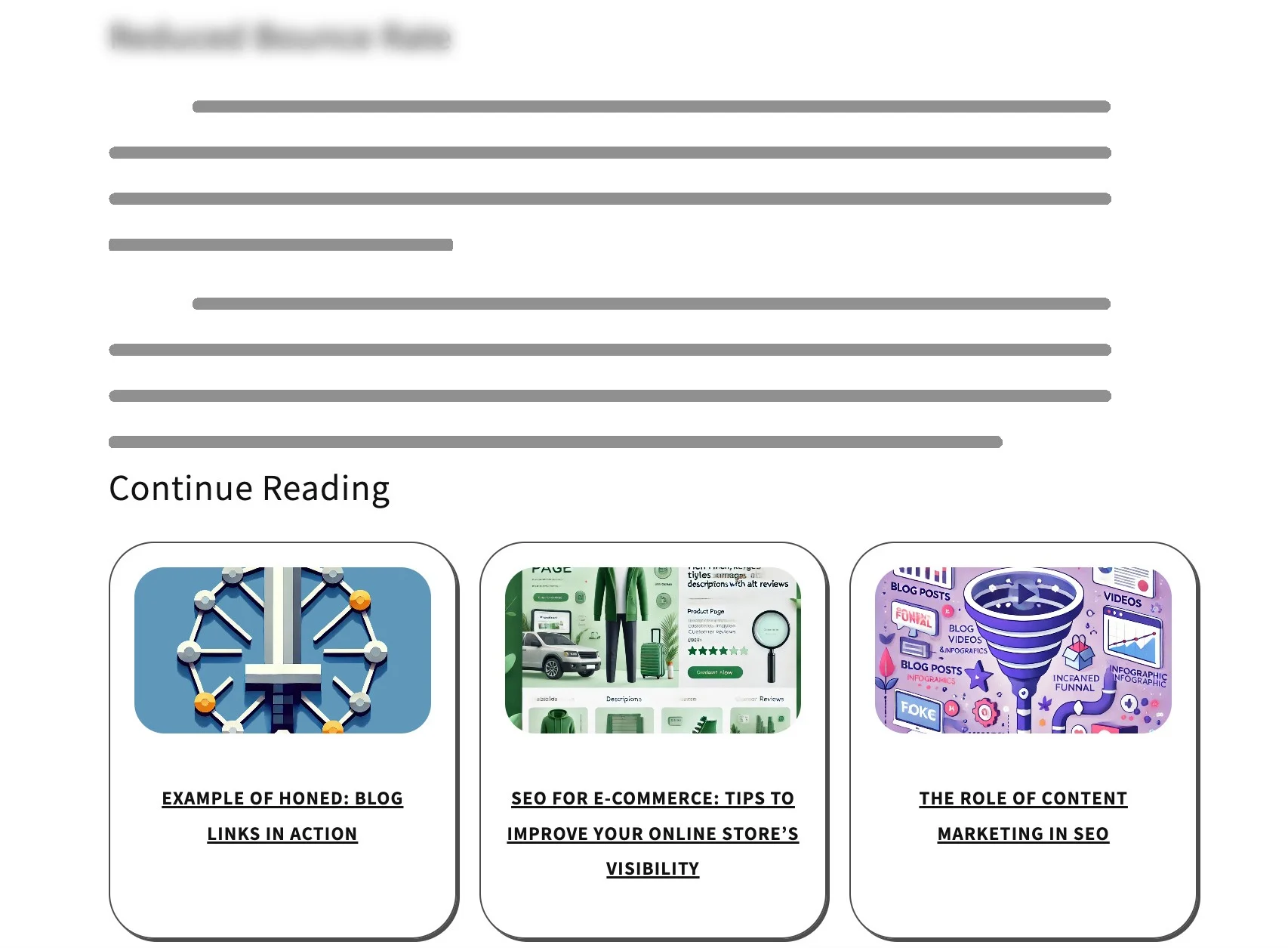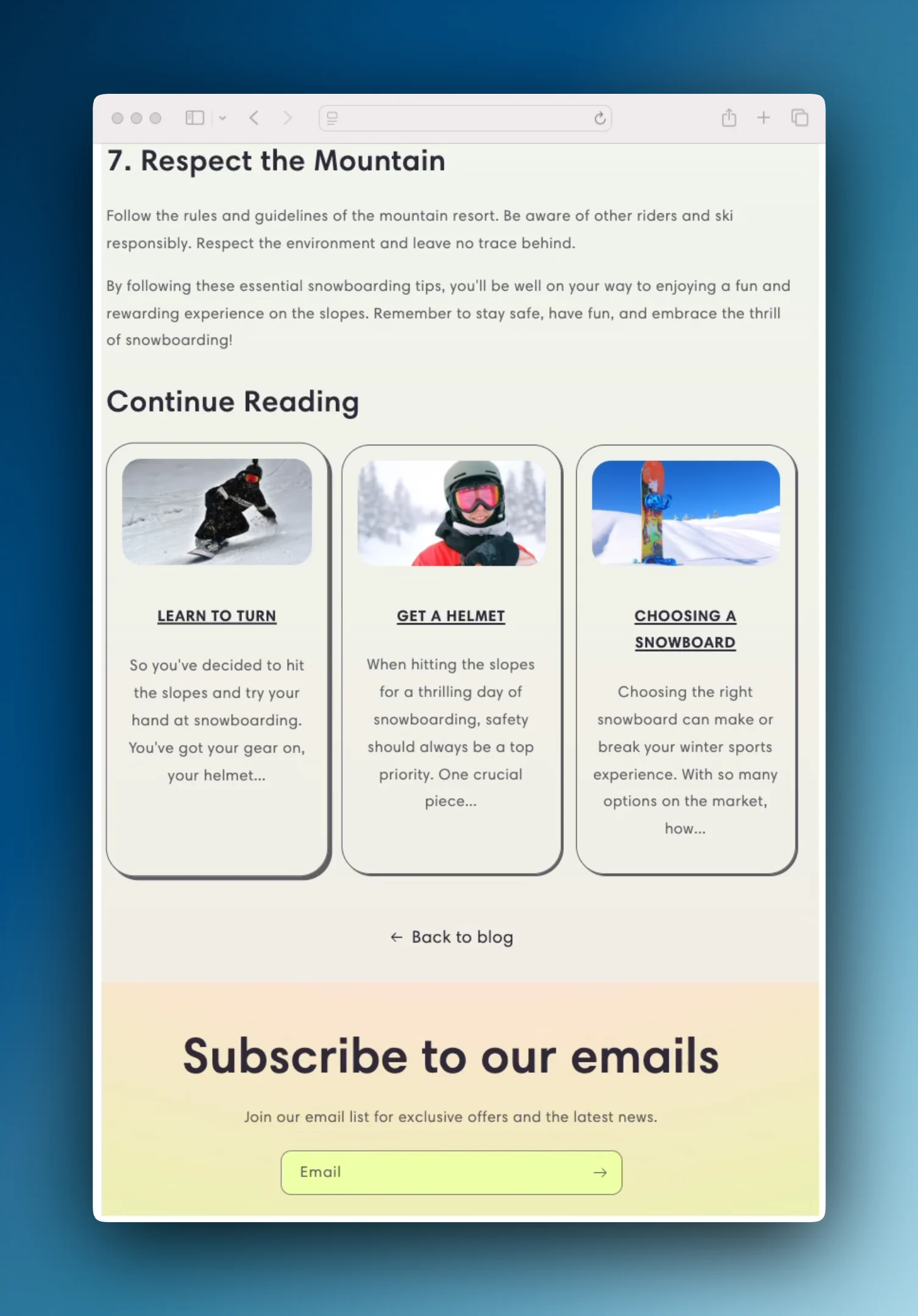Written By: John Curtis
Published: Tue Oct 29 2024

Part 1
The founder of Honed for Merchants shares the motivation and journey behind the Shopify app, Blog Links
In 2023 I was implementing an e-commerce store for a brand that had a strong set of of blog articles that drove a lot search traffic. The articles were an effective source of sales, signups, and creating brand interest through their well written and informative articles written entirely by the founder. We found that a small number of the articles were generating most of the visits and we knew that anyone interested in these articles would benefit from reading further into the blogs, but that the articles stopped abruptly and didn't give the reader an easy way to stay engaged with the brand.
Motivation
Consider this example blog about snowboarding, notice that when the reader is done with the article, the only action available is to "Sign Up" or an equally nebulous "Back to blog."

I don't know about you, but if I was presented with these options, I would likely hop off that site and on to whatever else my busy brain had queued up.
However, if we add the suggestive "Continue Reading" with some related articles, we provide the reader with an easy list to click on before their brain has a chance to context switch to the next thing.

An even better approach would be to take those suggestions and add interesting images that catch the eye.

The above example is the heart of Blog Links, making it easy to add links to your articles to keep readers engaged and make google happy.
Why is this important to you?
There’s three main benefits to having a great internal linking structure in your blogs, and your website in general.
Search engines like internal links
There are many studies about the benefits of having a strong internal linking strategy. One case study done by HubSpot showed a 40% increase in organic traffic by improving their internal links.
Internal links share credibility with other pages on your site
This means that if a search engine likes a page, they’ll like what you link to from that page. This article about internal links said it best:
"If you’ve heard that inbound links are like other sites voting for your content and telling search engines what your content is about, internal links are like voting for yourself and also letting the search engine know about your vote."
The longer readers stay on your site, the better your outcome
Sometimes it’s as simple as more sales, but often the benefit is harder to measure, such as ‘brand awareness’ or getting a user to sign up for marketing emails that end up converting later.
Adding Links by Hand is Hard and Error Prone
Once you commit to an internal linking strategy, you quickly realize that implementing “Read Next” lists at the bottom of each article by hand is tedious work, especially if you have a large back catalogue of articles. As a software engineer, I could only do a few of these “by hand” until I investigated automating the whole process.
Automate and Generalize
Shopify provides a template language called Liquid that you can use to customize your themes. With this I was able to quickly add a small amount of logic and styling to the article templates to generate the insertion of “Read Next” sections to articles. This worked great for our store, but it turn out that this is a wide-spread problem with Shopify blogs for both big and small stores!
We created the Blog Links app to generalize this solution to provide dynamically generated "Continue Reading" links at the bottom of your blog articles, or any other area of your shop. Stay tuned for part 2 as we dig deeper into how Blog Links works, and how you can benefit from implementing it on your shop.
Keep Reading
Part 1: Why we made Blog Links (this article)
Part 3: Technical Implementation of Blog Links (coming soon)
💡 Try Blog Links in your store
References
How to use internal linking to improve your website's SEO
9 SEO Insights You Must-Follow
How We Grew Our Organic Traffic 120% in 5 Months with 4 Simple Steps